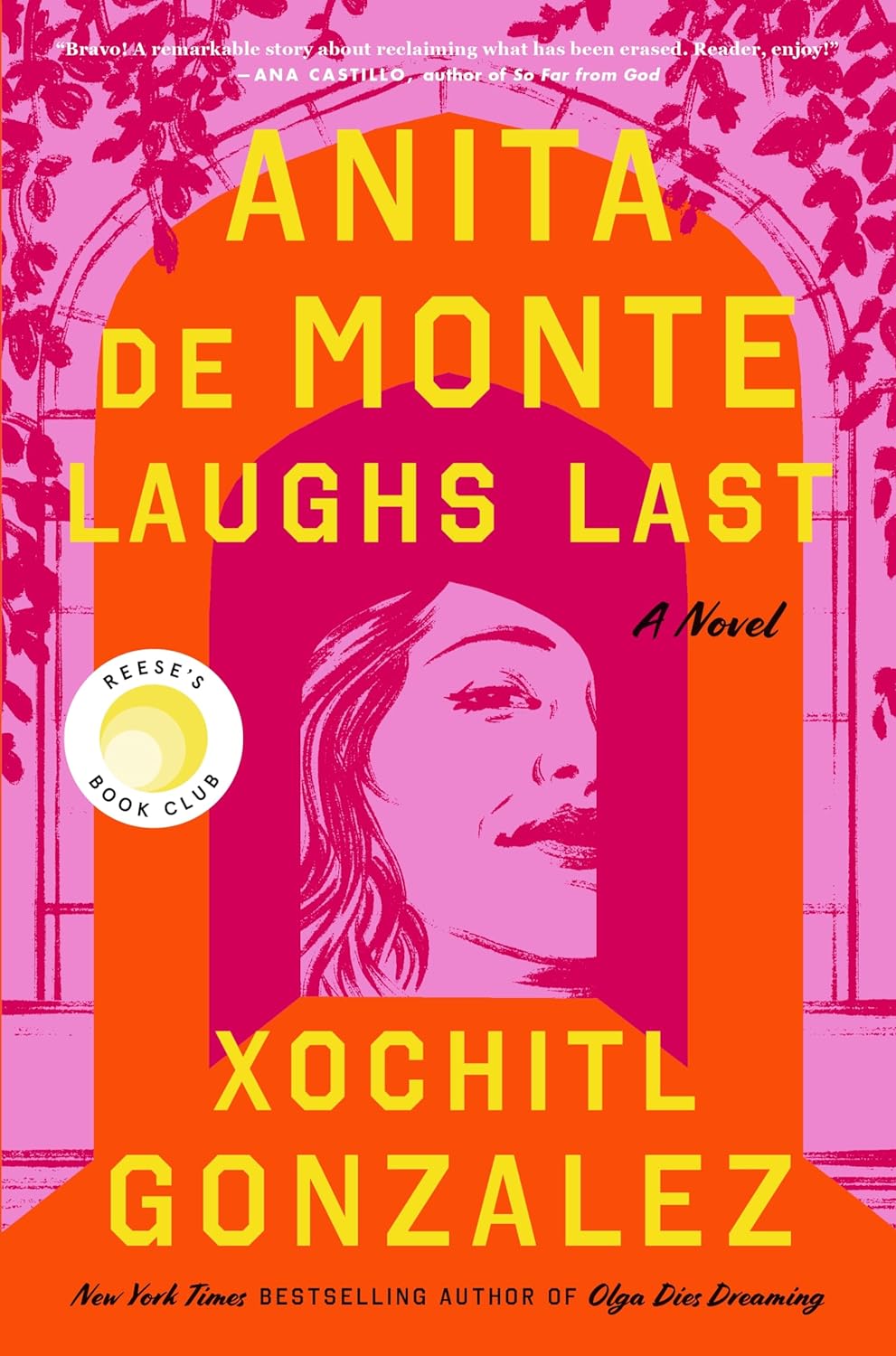A Review of
Anita de Monte Laughs Last
By Xochitl Gonzalez
Flatiron Books
Hardcover; 341 pages
Lively tale of two young Latina women’s personal and professional ventures in the NYC art world
By Sarah Tramel
A fiery titular character, dead on impact at the end of the first chapter, wittily narrates from beyond the grave. Did she fall? Jump? Was she pushed?
What follows is a hypnotizing back-and-forth between the stories of two young Latina women, two decades apart, both working harder than anyone around them to try and make it in the “lily-white art world” of the 1980s and 90s.
Anita, desperately sent to the states from Cuba by her parents during the fear-mongered Castro years, was raised in an orphanage and started making her own art to process her story and identity. Soon after arriving in New York City, she crosses paths with Jack Martin, a brash artist worshipped on the scene she wants so badly to enter.
Nearly twenty years later, Raquel is a student at Brown with Puerto Rican roots and a plan to write her art history thesis on Martin (more out of a desire to make her advisor happy and cultivate connections than out of an admiration for his work).
When Raquel meets Nick Fitzsimmons, another white male with a leg-up thanks to his family’s status and deep pockets, she is jarred by his down to earth sense of humor and immediate pursuit of her. Their ensuing romance simultaneously brings Raquel joy and opportunity while also cracking the foundation of her identity.
As the women’s stories unfold, the parallels between the two accumulate, and the question arises: will Raquel have a happier ending than Anita?
Xochitl Gonzalez writes with a steady acceleration that pulls the reader in. Anita’s voice rides a kind of “restless excitement,” mirroring her lifestyle in the frenzied New York art scene and her explosive relationship with Jack. It is the same energy that captivates and transforms Raquel’s world twenty years later.
We see Anita snap back at critics claiming art like hers was having a moment, stating “…don’t you think a permanent place would be better than a passing measure of time?” This notion is put on display only a few years later when Raquel has no knowledge of Anita’s existence, despite her Ivy League art history degree.
Do parts of the narrative feel a bit obvious, a bit on the nose? Sure. But that doesn’t make the message any less true, or the tale any less entertaining.
This novel highlights human nature’s tendency to ignore the discomfort and discrepancies between what one does and what one claims to believe. It can feel vital to matter to someone, and sometimes having this need met can cover a multitude of sins.
It is a saga that explores the concept of doing right by family. There is tension in being concurrently proud and ashamed of where you come from, but then feeling ashamed of the shame. And with so much shame, where does it all go?
Even more, though, this book is about what constitutes art and whether personal identity belongs in the conversation at all. Should art be seen through the lens of the “pain and life and history” of its creator, or is it “genderless, makerless—left to stand on its own and be whatever the viewer thinks it is”?
To sum things up in the words of Anita: “Life’s never simple for women like us—women who won’t just get with the program; women whose minds and mouths race faster than the world can keep up with.” Thank goodness for lives that aren’t simple, and the resulting stories that are never boring.
Sarah Tramel is an avid reader who lives in Belhaven with her husband, Robert, her daughter, Tindall, and her rescue dog, Leo. Her passions also include running, drinking wine on porches, dancing to live music, and adventures with her girlfriends.
